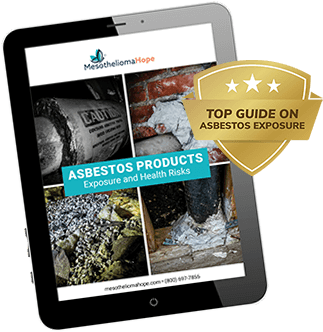Asbestos and Fireproofing
Americans had to learn the hard way how dangerous asbestos exposure was.
Asbestos was common in all forms of insulation products as it was proven thermally inert—asbestos didn’t burn and could withstand extremely high temperatures without combusting.
In addition, asbestos was also:
- Leat loss restricting
- Electrically non-conductive
- Non-corrosive
- Lightweight
- Blendable with other products
- Stable
- Widely sourced
- Inexpensive
It seemed like there was nothing to dislike about asbestos fireproofing and its many alternative applications. However, in the 1980s, the general public became aware of the grave dangers of asbestos exposure and its link to deadly diseases like mesothelioma.
Asbestos Fireproofing Properties
Asbestos is a group of naturally-occurring, non-combustible silicate minerals composed of glass-like fibers.
There are two asbestos fiber classifications.
- Serpentine Class: Contains chrysotile or soft (white) asbestos.
- Amphibole Class: Contains hard, spiky crystals along with a range of colors like brown, blue, and green.
The five sub-types of amphibole are:
- Actinolite
- Amosite
- Anthophyllite
- Crocidolite
- Tremolite
Geographically, asbestos occurs all over the world. Serpentine-class asbestos is the most common natural form, and it was used extensively in fireproofing applications.
Amphibole classes are not as plentiful but tend to have a higher heat resistance when mixed as additives with other non-flammable products like gypsum and cement. Amphibole asbestos is a harder form and not as friable or easily turned to powder like serpentines.
By the 1980s, government regulations began to ban asbestos fireproofing products. The Environmental Protection Agency (EPA) and the Occupational Safety and Health Administration (OSHA) worked to stop asbestos material manufacture and distribution. But the damage had already been done for many American workers exposed to asbestos fibers in their workplace.
Geologically, asbestos formed under high heat and pressure. Nature let asbestos keep these fireproofing properties whether used in a pure, raw state or blended with a host of other materials.
Asbestos formed close to the surface, making extraction inexpensive. Supplies of asbestos were nearly inexhaustible, so the insatiable demand for asbestos throughout the twentieth century was filled continuously.
Fireproofing Uses for Asbestos-Containing Products
Over 3,000 asbestos products made from the 1920s to the 1980s contained different forms of asbestos.
Construction projects used most of the asbestos-containing materials (ACM). Buildings, factories, and energy plants needed fire protection, and ACMs were the first choice for builders.
Some of the many fireproofing applications for asbestos materials included:
- Structural steel protection.
- Shipbuilding for boilers, engines, and munitions lockers.
- Heavy equipment drives, exhausts, and high-friction surfaces.
- Aircraft engine compartments, cockpits, and cargo transport bays.
- Power plants, oil refineries, and metal smelters.
- Railroad locomotives and fuel cars.
- Blacksmith and welding shops.
Both serpentine and amphibole asbestos-exposed many people in their workplaces.
Ironically, the very material installed to protect them from fire hazards turned out extremely harmful. That even included fireproof clothing workers donned when exposed to flammable worksites and elements.
Mesothelioma from Asbestos Fireproofing Materials
Mesothelioma is a deadly form of lung disease. Exposure to airborne asbestos fibers is the only known cause of mesothelioma.
Friable serpentine asbestos fireproofing materials presented the highest exposure risk because old, crumbling asbestos filled the air with microscopic powders. Less-friable amphibole asbestos still became airborne when mechanically disturbed by drilling, cutting, and sanding.
When inhaled, asbestos fibers impaled the lung lining or mesothelium and stayed there.
Amphibole fibers were sharper than serpentine particles. They are far more deadly than serpentine particles because it takes less exposure over a shorter duration to damage the mesothelium.
Eventually, scar tissue from asbestos irritants turned into malignant tumors or the fatal disease called mesothelioma.
Compensation for Mesothelioma Victims
Mesothelioma victims are eligible for compensation for their workplace disease. Compensation covers medical expenses, lost wages and personal injury damages.
Families of mesothelioma victims can apply on their behalf. They can also file lawsuits in wrongful death cases.
To see if you may be entitled to compensation, reach out to Mesothelioma Hope today for a free case review.




